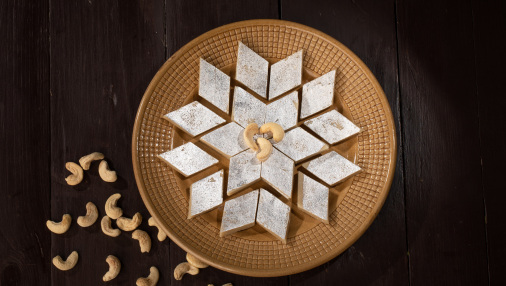Why Indian Sweets Are So Famous: A Taste of Tradition and Emotion
India is a land of vibrant festivals, rich traditions, and diverse cuisines — and nothing captures this culinary diversity better than its sweets, or “mithai.” From the syrupy Gulab Jamun to the flaky Soan Papdi, Indian sweets are not just desserts — they are deeply woven into the fabric of everyday life, religious rituals, and celebrations.
So, why exactly are Indian sweets so famous? What makes them unique and adored not only across India but also around the world? Let’s dive into the reasons.
1. A Sweet History Rooted in Tradition
Indian sweets have a legacy that spans thousands of years. Ancient texts like the Rigveda mention offerings made with honey, jaggery, and grains — the early versions of what we now call sweets. Over time, with the introduction of sugar, milk, and spices, the variety of mithai expanded.
During the Mughal era, sweets became even more elaborate. Influences from Persian cuisine gave rise to milk-based sweets like Kheer, Sheer Khurma, and Shahi Tukda. Every dynasty, region, and community added its own signature to the ever-growing collection of desserts.
2. Every Occasion Calls for Sweets
One of the main reasons Indian sweets are so deeply loved is their inseparable connection to life’s milestones. Whether it’s:
- A wedding
- A religious festival like Diwali, Holi, Eid, or Raksha Bandhan
- The birth of a child
- Buying a new car or home
- Even exam results
“Kuch meetha ho jaye?” (“Shall we have something sweet?”) is the go-to phrase.
Sweets represent joy, prosperity, and good luck. Gifting sweets during festivals is a cherished tradition, symbolizing love and goodwill.
3. Mind-Blowing Variety Across Regions
India’s incredible diversity is best seen — and tasted — in its sweets. Here’s a quick glimpse of regional favorites:
- North India: Gulab Jamun, Jalebi, Barfi, Rasmalai
- East India: Rasgulla, Sandesh, Mishti Doi
- West India: Mohanthal, Basundi, Shrikhand, Malpua
- South India: Mysore Pak, Payasam, Kozhukatta, Rava Kesari
4. Unique Ingredients and Techniques
Indian sweets are often made with ingredients not commonly used in Western desserts, such as:
- Ghee (clarified butter)
- Khoya or Mawa (reduced milk)
- Cardamom, saffron, and rose water
- Jaggery (unrefined cane sugar)
- Chickpea flour (besan)
These, combined with traditional techniques like slow cooking, hand-shaping, or frying and soaking, result in sweets that are rich, flavorful, and completely unique.
5. Spiritual and Cultural Significance
Sweets in India go beyond taste — they hold spiritual meaning. Most temples offer prasadam (blessed food) in the form of sweets. From Tirupati Laddu to Modak for Lord Ganesha, mithai plays an essential role in worship.
No religious ritual is complete without offering sweets to the deity first. The belief is that sweetness pleases the gods — and spreads joy to those who partake.
6. Global Recognition and Nostalgia
With the Indian diaspora spread across the globe, so has the fame of Indian sweets. Cities like London, New York, and Toronto have dedicated sweet shops offering everything from Kaju Katli to Cham Cham.
Indian sweets also stir nostalgia — especially for Indians living abroad. A bite of their favorite mithai connects them to home, festivals, family, and childhood memories.
In recent years, Indian sweets have gained recognition in global food festivals, YouTube channels, and Instagram food trends.
7. Modern Fusion and Reinvention
Contemporary chefs and patisseries are reinventing Indian sweets with modern twists:
- Chocolate Barfi
- Rasmalai Cheesecake
- Paan-flavored Ladoo
- Saffron Macarons with Mithai Fillings
These innovations help Indian sweets appeal to younger generations and global food lovers — blending tradition with trend.
Conclusion: A Celebration of Culture and Sweetness
Indian sweets are more than just food. They are emotion, tradition, celebration, and devotion — all rolled into one.
Whether it’s a festive box of Motichoor Ladoos, a homemade Kheer, or a piece of Kaju Katli from a neighbor, every bite tells a story of culture, heritage, and human connection.
Jai Mithai!

